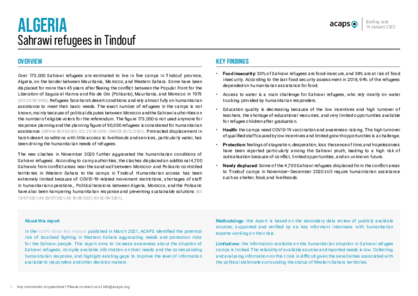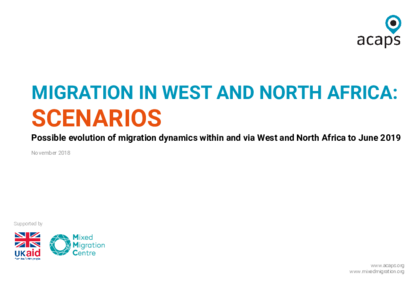Latest updates on country situation
07 August 2023
A series of wildfires since 24 July 2023 have affected over 30,000 people (6,000 households). About 35 wildfires have affected 11 regions in the northeastern parts of the country, killing at least 34 people and injuring 700. The most affected provinces are Bejaïa, Bouira, Boumerdes, Jijel, Skikda, and Tizi Ouzou. The fire has also severely affected livestock and crops, affecting people’s livelihoods and income. The smoke and ash from the fire have led to poor air quality and health problems. The Government has provided tents, water, and other assistance to the displaced people, but many still need shelter, WASH, and healthcare services besides livelihoods assistance. Extreme heat (temperatures reaching 45–50° C), increasing wind speed, and low humidity are contributing to the spread of the fires. (IFRC 07/08/2023, Phys.org 24/07/2023, Sky News Arabia 25/07/2023)
current crises
in
Algeria
These crises have been identified through the INFORM Severity Index, a tool for measuring and comparing the severity of humanitarian crises globally.
DZA002 - Mixed Migration
Last updated 16/02/2025
Drivers
Displacement
Crisis level
Country
Severity level
2.6 Medium
Access constraints
1.0
DZA003 - Sahrawi refugees
Last updated 16/02/2025
Drivers
Displacement
Crisis level
Country
Severity level
2.5 Medium
Access constraints
2.0
DZA004 - Country level
Last updated 16/02/2025
Drivers
Displacement
Crisis level
Country
Severity level
2.8 Medium
Access constraints
2.0
REG007 - Central Mediterranean Route
Last updated 29/09/2024
Drivers
Crisis level
Regional
Severity level
3 Medium
Access constraints
3.0
REG008 - Western Mediterranean Route
Last updated 29/09/2024
Drivers
Crisis level
Regional
Severity level
2.6 Medium
Access constraints
1.0
Analysis products
on
Algeria
19 January 2022
Algeria: Sahrawi refugees in Tindouf
DOCUMENT / PDF / 604 KB
This report aims to increase awareness about the situation of Sahrawi refugees, compile available information on their needs and the corresponding humanitarian response, and highlight existing gaps to improve the level of information available to responders and other decision makers.
30 November 2018
Migration in West and North Africa
DOCUMENT / PDF / 855 KB
These scenarios consider how migration dynamics within and via West and North Africa (including across the Mediterranean Sea) might evolve in the first half of 2019 and the potential humanitarian consequences. The aim is to support strategic planning, create awareness and promote preparedness activities for policymakers and other actors working on migration.



